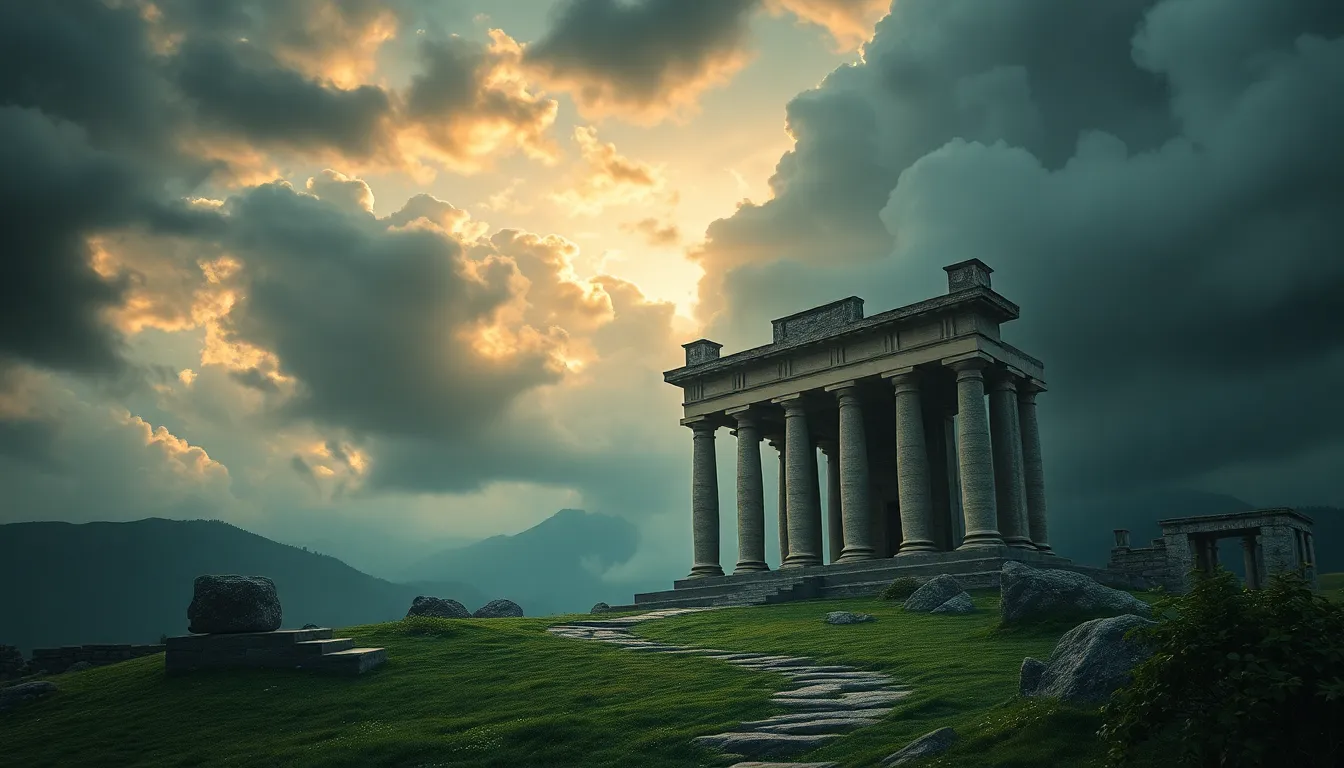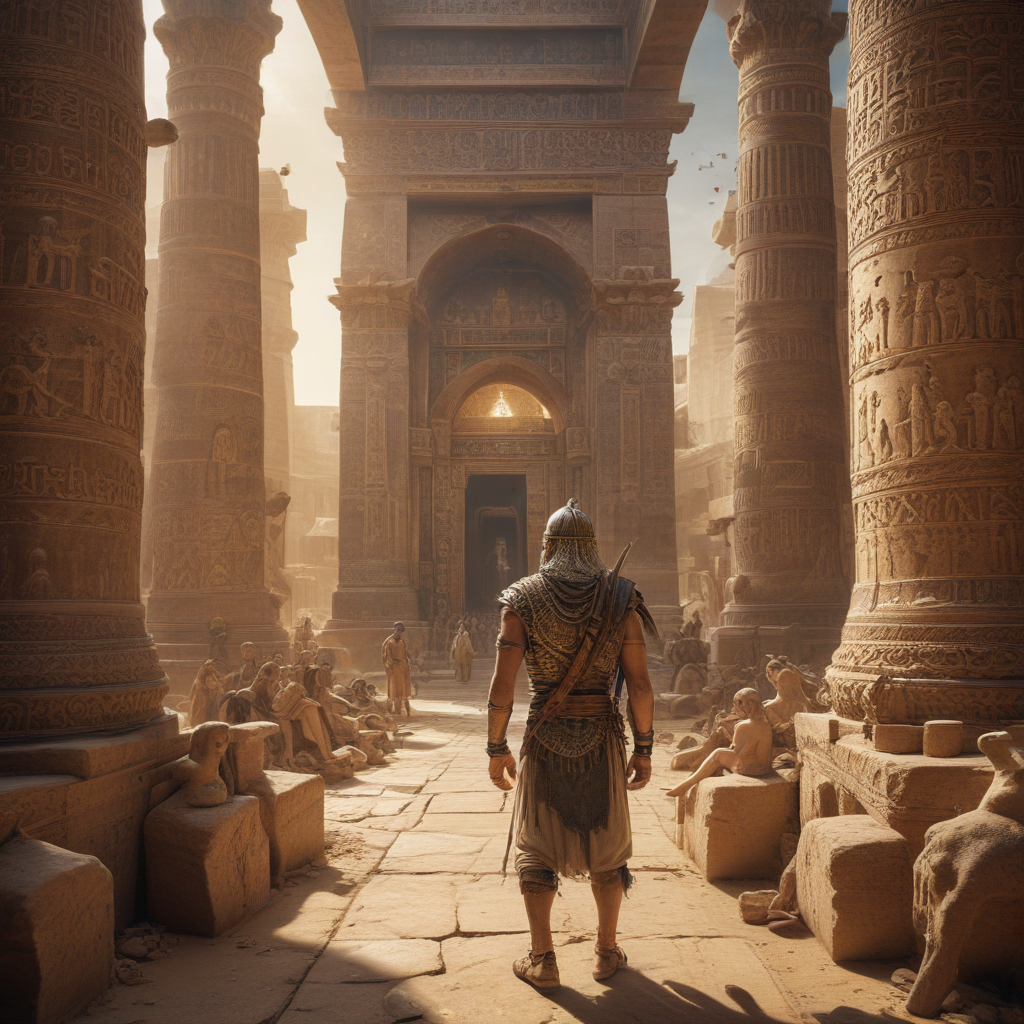The Mythical Echoes: How Sacred Places Resound Through Time
I. Introduction
Sacred places have long held a profound significance in the hearts and minds of people across various cultures. These sites, ranging from ancient temples to serene natural landscapes, serve as focal points for spiritual practice, community gatherings, and individual reflection. The concept of “mythical echoes” refers to the enduring resonance of these places through history, culture, and spirituality, influencing generations and shaping collective identities.
This article aims to explore the historical, cultural, and spiritual resonance of sacred sites, delving into their origins, significance, and the myriad ways they continue to affect the human experience.
II. Historical Context of Sacred Places
The origins of sacred sites can be traced back to ancient civilizations, where specific locations were believed to be imbued with divine presence or spiritual significance. These sites often served as centers for worship, communal gatherings, and even astronomical observations.
- Stonehenge: A prehistoric monument in England, Stonehenge is believed to have been used for rituals and ceremonies, possibly linked to ancient astronomical events.
- The Pyramids of Giza: These monumental structures served not only as tombs for pharaohs but also as sites of worship and reverence, reflecting the ancient Egyptians’ beliefs in the afterlife.
- Machu Picchu: This Incan citadel, perched high in the Andes, is thought to have been both a religious site and a royal estate, showcasing the Incas’ deep connection to their environment and spirituality.
The geographical selection of these sacred sites often reflected their perceived connection to the divine, with natural features such as mountains, rivers, and stones enhancing their significance.
III. The Spiritual Significance of Sacred Spaces
Sacred places are often intertwined with specific beliefs and rituals that elevate them beyond mere physical locations. Many cultures have developed unique practices surrounding these spaces, fostering a sense of community and spiritual connection.
The concept of pilgrimage plays a crucial role in many religions, where individuals journey to sacred sites seeking spiritual growth or fulfillment. This journey often symbolizes a deeper quest for meaning and connection.
Many people report personal transformations and spiritual awakenings when visiting these sacred locations, highlighting the profound impact they have on individual lives.
IV. Mythology and Sacred Places
Myths and legends often shape the identity of sacred sites, providing them with rich narratives that enhance their allure and significance. These stories frequently intertwine with the cultural heritage of the communities that revere them.
- Greek mythology and Delphi: Considered the center of the world by the ancient Greeks, Delphi was home to the Oracle, who provided prophetic insights and guidance, deeply embedding the site in the spiritual and cultural fabric of Greek society.
- Hinduism and Varanasi: One of the oldest inhabited cities in the world, Varanasi is revered for its connection to the Ganges River and its role in Hindu beliefs regarding life, death, and rebirth.
The interplay between myth and reality often enriches the perception of these sacred spaces, allowing them to resonate through time and culture.
V. Resonance Through Architecture and Art
The architectural features of sacred places often enhance their atmosphere, creating spaces that inspire awe and reverence. Many sacred sites incorporate elements designed to elevate the spiritual experience.
- Cathedrals: Gothic cathedrals, with their soaring ceilings and intricate stained glass, are designed to draw the eyes upward, symbolizing a connection to the divine.
- Temples: Many temples feature elaborate sculptures and carvings that depict deities and mythological stories, serving as both artistic expressions and educational tools for worshippers.
Artistic expressions inspired by these sacred sites, such as paintings, music, and literature, play a vital role in preserving and sharing the narratives associated with them.
VI. Cultural Preservation and Sacred Sites
Maintaining and protecting sacred places is crucial for preserving cultural heritage and identity. As globalization and modernization progress, many sacred sites face threats from urban development, tourism, and environmental degradation.
Indigenous and local communities are often at the forefront of efforts to safeguard their sacred spaces, advocating for their rights and the recognition of their cultural significance. Initiatives include:
- Creating conservation programs that focus on sustainable tourism.
- Raising awareness about the importance of these sites through education and community engagement.
- Collaborating with governmental and non-governmental organizations to ensure legal protections.
VII. The Role of Sound in Sacred Experiences
Sound plays a vital role in enhancing the spiritual experiences associated with sacred places. Many sacred architectures, such as cathedrals and temples, are designed with acoustics that amplify sound, creating an immersive atmosphere for worshippers.
Rituals and practices involving sound, such as chants, prayers, and music, serve to deepen the connection to the divine and evoke emotional responses. The psychological effects of sound can lead to:
- A heightened sense of presence and transcendence.
- A feeling of community and shared experience during collective rituals.
- Personal reflection and meditation through the resonance of sound.
VIII. Modern Interpretations of Sacred Spaces
In contemporary society, the perception and utilization of sacred places have evolved. Many people now view these sites through a lens of spiritual tourism, seeking personal growth and connection rather than adhering strictly to religious traditions.
This rise in spiritual tourism raises important questions about the balance between commercialization and reverence. While tourism can provide economic benefits, it can also lead to:
- Overcrowding and degradation of sacred sites.
- The commodification of spiritual experiences.
- Potential conflicts between traditional practices and modern expectations.
IX. Case Studies of Sacred Places Around the World
Across the globe, diverse sacred sites tell unique stories and echo the experiences of countless individuals. Some notable examples include:
- Uluru: A sacred site for the Anangu people in Australia, Uluru holds deep cultural significance and is a symbol of connection to the land.
- The Vatican: As the center of the Roman Catholic Church, the Vatican is a powerful symbol of faith and history, attracting millions of pilgrims and tourists alike.
- The Great Wall of China: While primarily known as a historical structure, various sections of the Great Wall are also considered sacred by local communities, reflecting the intersection of culture and spirituality.
These places contribute to a shared human experience, echoing the collective journey of humanity through time.
X. Conclusion
Sacred places resonate through time, echoing the beliefs, rituals, and stories of cultures around the world. They serve as powerful reminders of our shared humanity, our quest for meaning, and our connection to the divine. By understanding the historical, spiritual, and cultural significance of these sites, we can appreciate their role in shaping our identities and fostering a sense of community across generations. As we navigate the challenges of modernity, it becomes increasingly important to honor and protect these sacred spaces, ensuring that their echoes continue to inspire and guide future generations.



